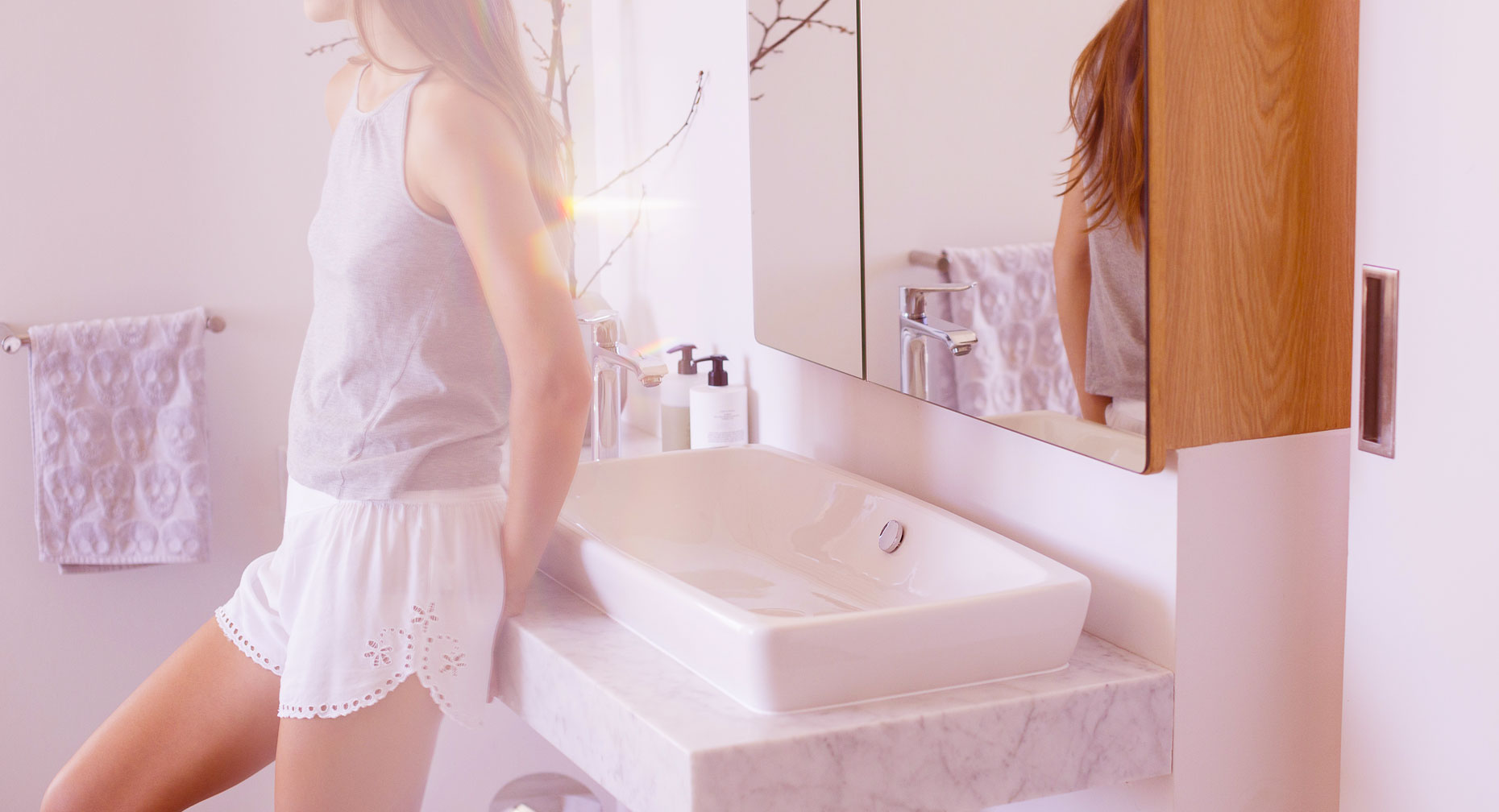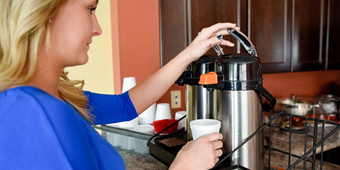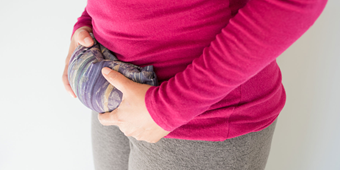Is a Menstrual Cup Right for You?

Find Your Perfect Match
Answer a few questions and we'll provide you with a list of primary care providers that best fit your needs.
Remember wondering as a teenager how tampons worked? It was only through trial and error that you mastered using them. The same goes for using a menstrual cup. But if the thought of insertion and removal and the fear of spillage leaves you clinging to your tried and true, try to keep an open mind. A menstrual cup has its advantages.
Whether you buy a reusable cup or disposable ones, the concept of how they work is the same. A menstrual cup works by folding it and inserting into your vagina – just below the cervix. Once inside, it opens and forms a seal, “catching” menstrual fluid – rather than absorbing it. A pull-tab aids in cup removal and emptying.
Success will greatly depend on how well you know your body and your patience with the insertion technique.
Why Try a Menstrual Cup?
Can a cup really catch your menstrual flow? How big is it? Will it leak? Is it uncomfortable? How does it work? Manufacturers of menstrual cups provide great educational information and diagrams to answer these questions and more. Some companies will even let you try their product risk-free with a money-back guarantee.
Certainly, menstrual cup usage is easier on the environment. The average woman uses about 10,000 sanitary products during her lifetime, according to HealthyWomen.org.
Menstrual Cup Pros and Cons

The learning curve for menstrual cup usage may be one of its largest drawbacks. Success will greatly depend on how well you know your body and your patience with the insertion technique. You may need to try for several months until you find what works for you. When improperly inserted, the cup may not be in the right position to catch menstrual fluid and may therefore leak.
Some women simply cannot get past hygiene and infection concerns surrounding insertion and removal. Lack of private bathroom access may also be a deterrent if the cup needs to be emptied while away from home. Still, the following benefits may override these concerns:
- Eco-friendly alternative
- Cost-effective product
- More natural approach since free from chemicals, bleaches or irritating fibers
- Similar comfort and physical freedom as with tampon usage
- Longer use, ranging from six to 12 hours (compared to four to eight with tampons)
- Less leakage than tampons if used properly
- Potential reduced risk of urinary tract infection if used as tampon alternative
- Reduced risk of toxic shock syndrome if used as tampon alternative
- Attractive to women with heavy menstrual flows and women over age 40
Choosing the Right Menstrual Cup
Menstrual cups come in reusable and disposable options.
Disposable cups are soft, flexible cups that resemble a diaphragm. They can be difficult to find and are more expensive than tampons but can be used nearly twice as long in most cases.
Reusable cups generally are bell-shaped and made of rubber (latex) or medical-grade silicone and must be properly cleaned and stored after use per each product’s manufacturer instructions. Pricing is typically around $35. With proper care, a cup can last for many years.
Size and materials vary. What works for you will depend on multiple factors, including age, vaginal or C-section delivery, flow heaviness, latex allergy, pelvic muscle strength and your preference for having sex while using the product.
Always wash hands before and after adding or changing a menstrual cup to prevent infection.
Find Your Perfect Match
Answer a few questions and we'll provide you with a list of primary care providers that best fit your needs.
Source: HealthyWomen.org; Center for Young Women’s Health, Boston Children’s Hospital




